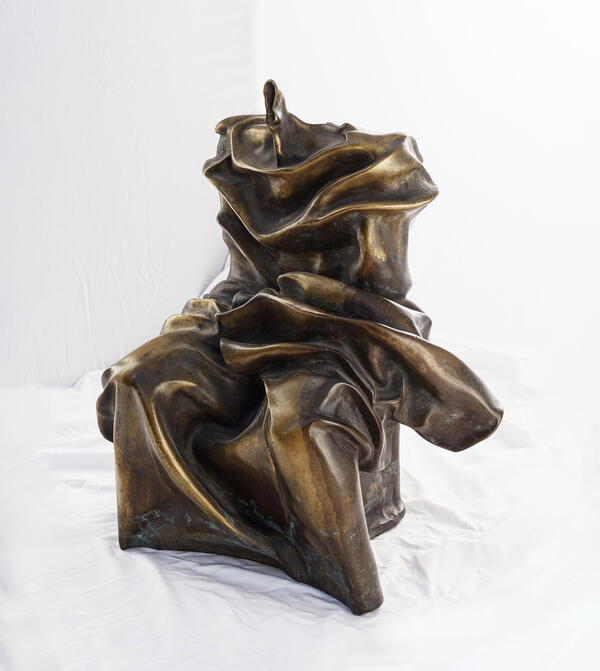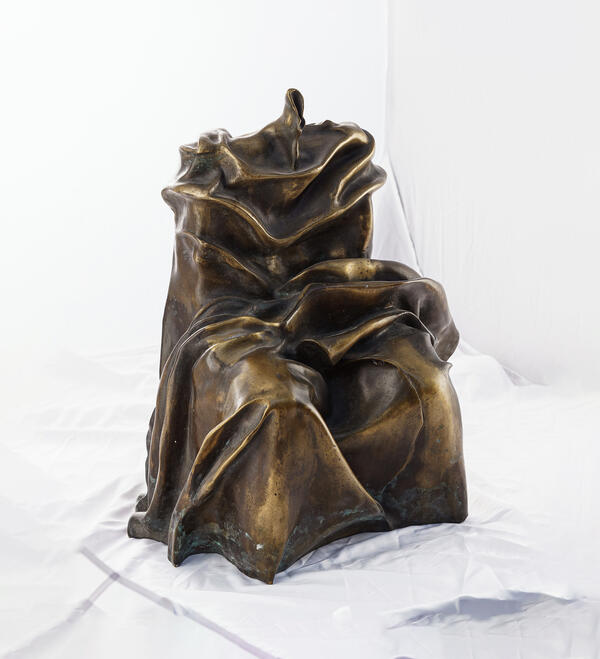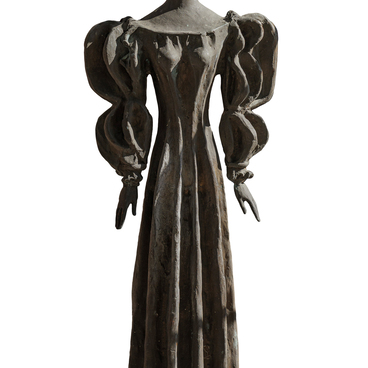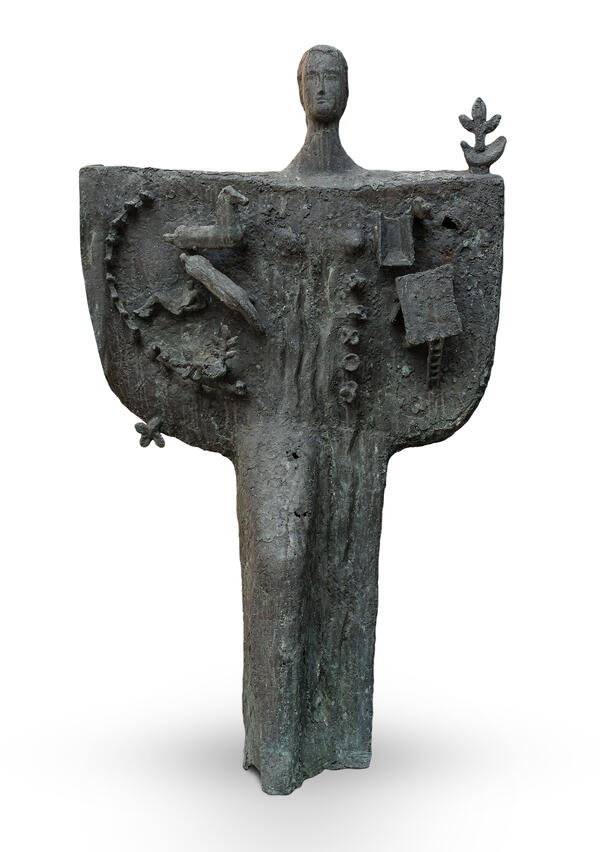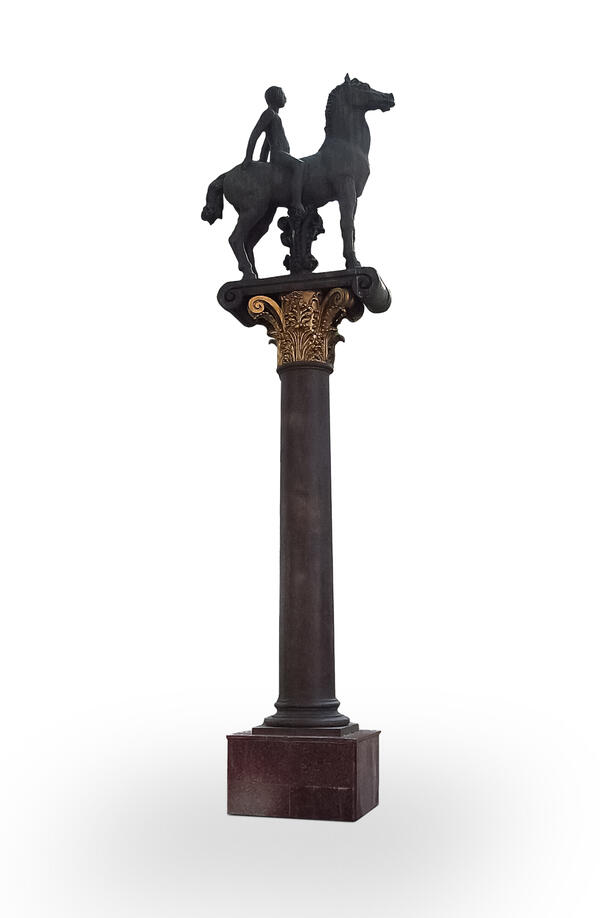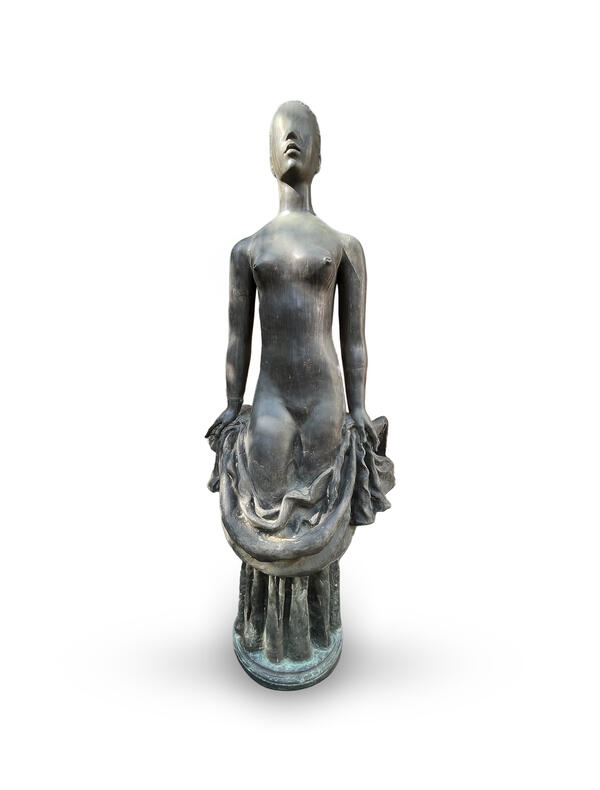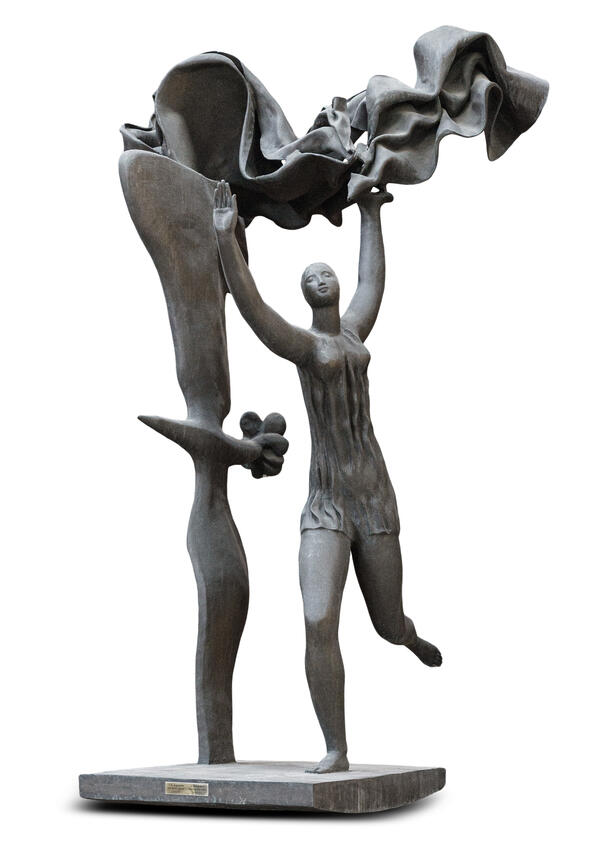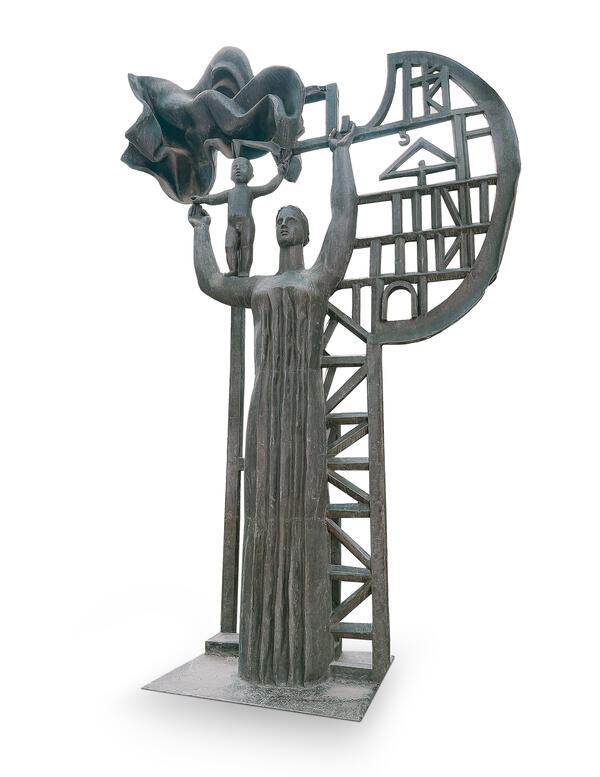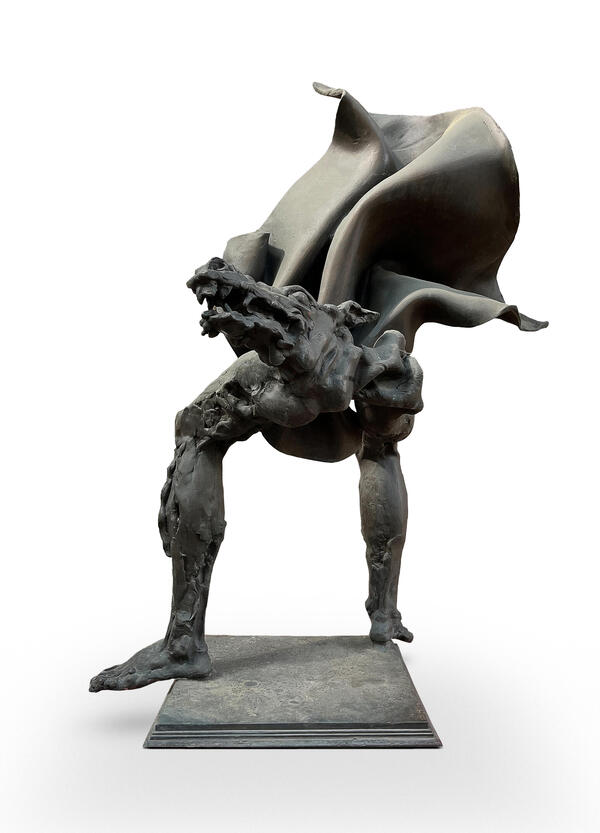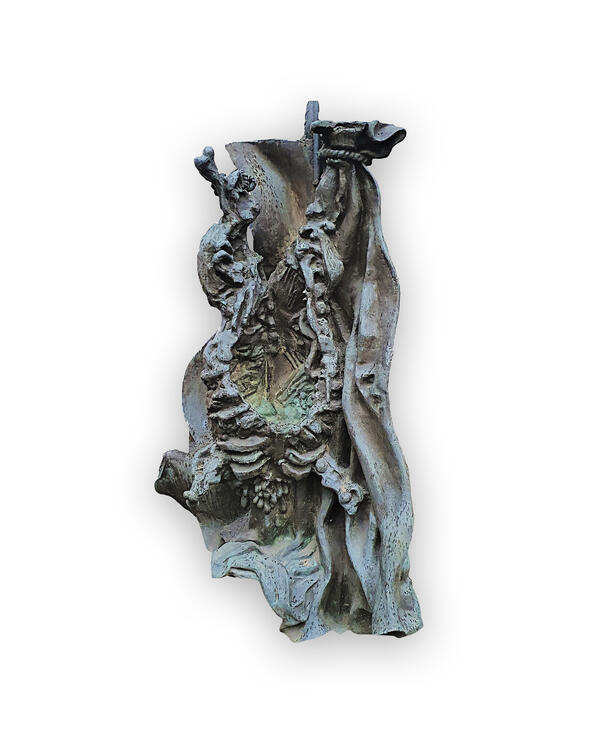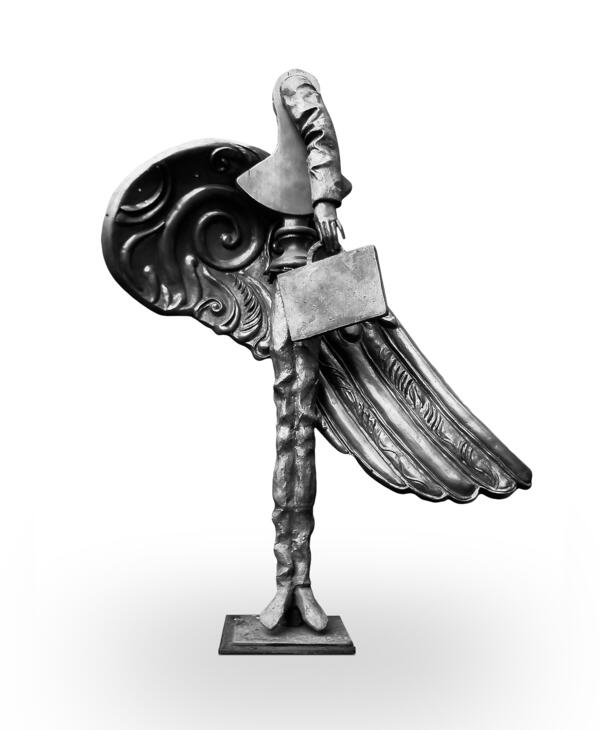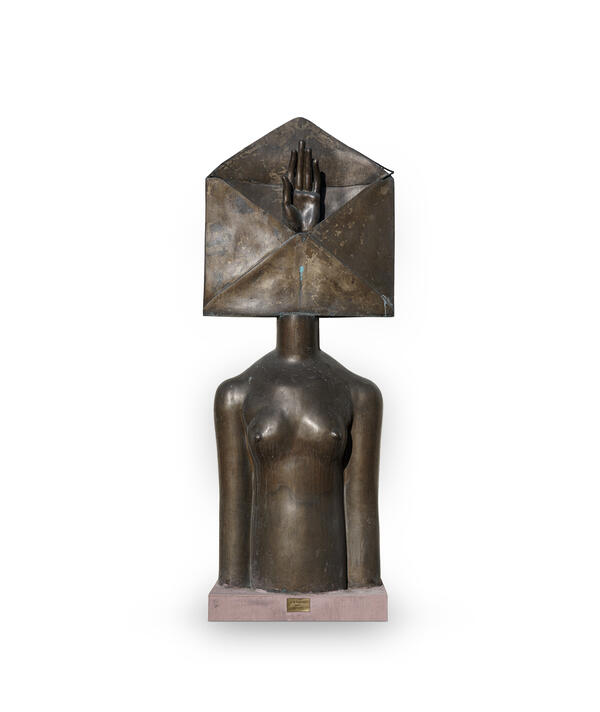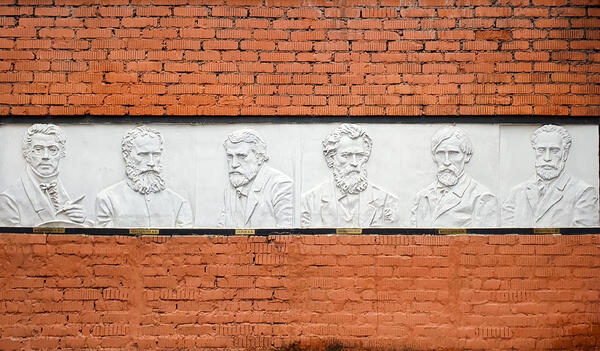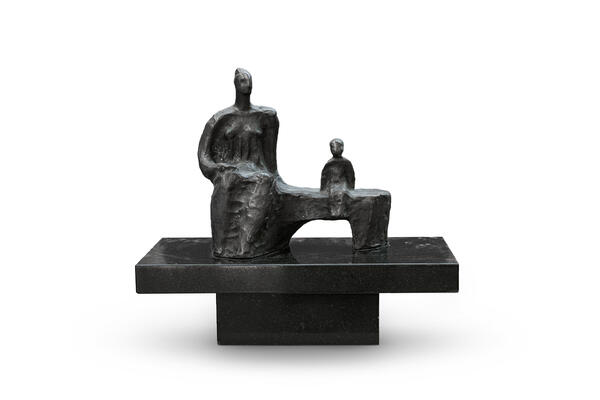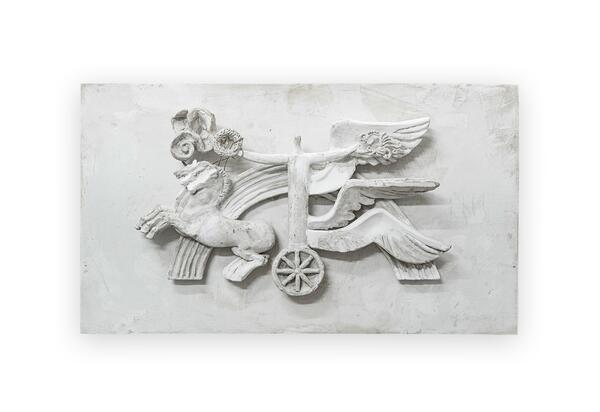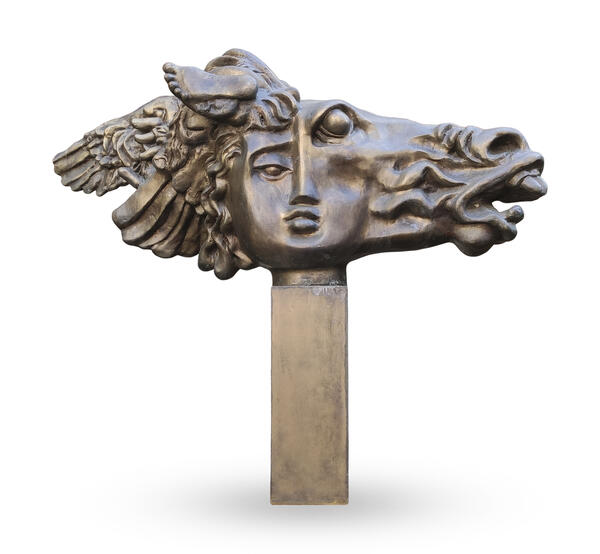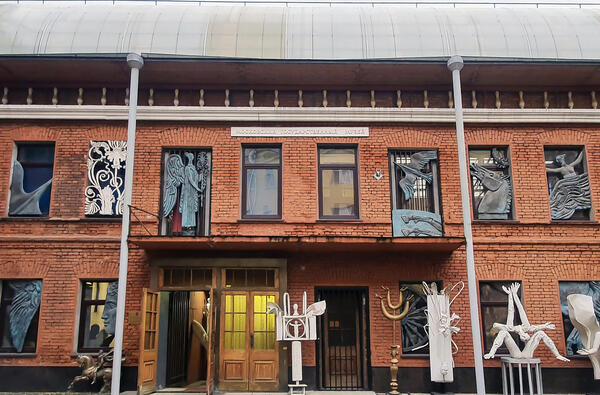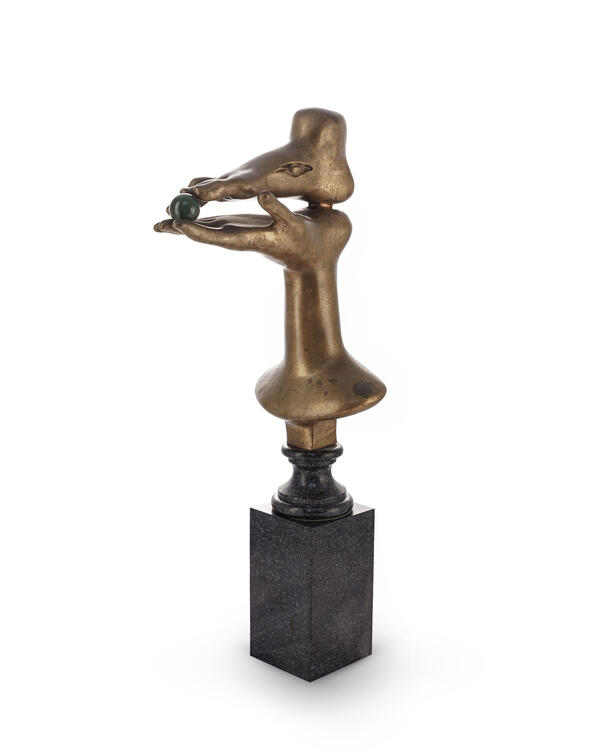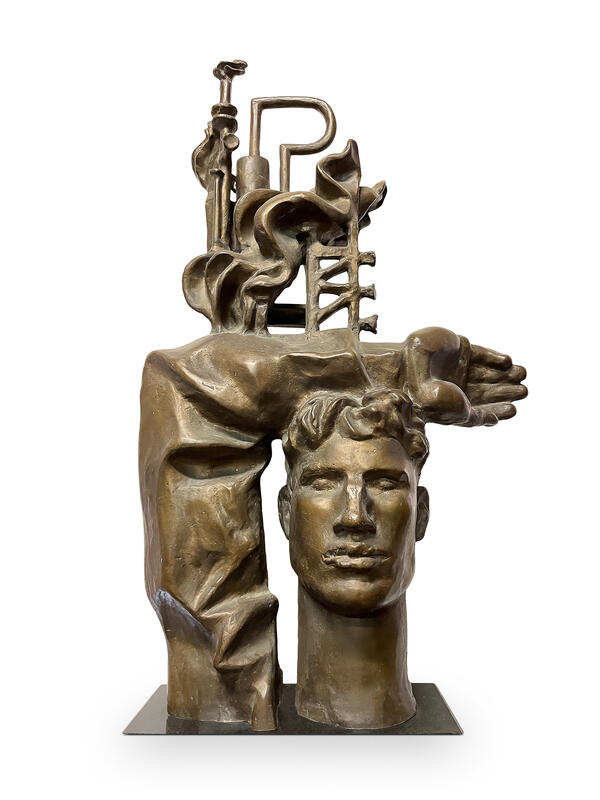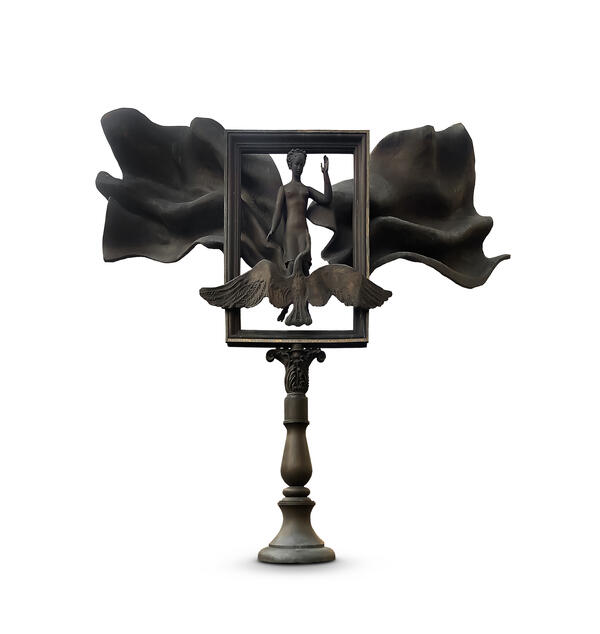The Pietà is a popular image in the history of world art. Artists from the early Germanic culture and the Italian Renaissance developed the basic composition for its visual representation in sculpture. Based on this rich artistic and cultural foundation, Alexander Burganov approached the subject in a new way. He transformed the theme of Mary grieving over Jesus into an abstract symbol. It became a universal representation of human sorrow — a mourning for a hero and all heroic deeds of humans in general.
In this composition, the main
characters are not personified. There is no grieving mother bent over the dead
body of her son. Instead, there is only the fabric that was once a vestment but
now exists on its own. There are no gestures of despair or sorrowful crying, as
the suffering seems to be hidden from the viewer. Only the folds remain,
referring to the recognizable image of the Pietà. By abandoning specific forms
of the human body, the sculptor created a tragic interpretation and formed a
sacred space to preserve the memory of all beautiful artworks united by this
common theme.

